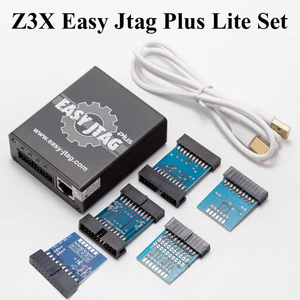
All categories
Featured selections
Trade Assurance
Buyer Central
Help Center
Get the app
Become a supplier

(81 products available)






































The UFS flash box, also known as the Universal Flash Storage box, is a specialized device that aids in the flashing or programming of firmware onto mobile device chips. Several UFS flash box models exist, each designed to cater to specific needs and functionalities.
The UFS 3.0 flash box has several features that aid in data recovery and device testing. Here's a brief overview of each of their functions:
USB Port
The UFS box connects to a PC through a USB port. This enables flash storage devices to be inserted so that data can be transferred to and from the device.
UFS Connector
The connector is the main characteristic of the box. It consists of two interface types: the UFS and the eMMC. Both of them provide direct connections to Universal Flash Storage and embedded MultiMediaCard flash memory cards.
Data Recovery Features
A variety of data recovery functions are available on certain UFS flash boxes. They can recover lost or corrupted data from different devices.
Write/ Read Functions
The write/read functions allow users to write new data to flash memory and read or access existing data. These functions are important for software installation, system updates, and regular operation of electronic devices.
Diagnostic Tools
Some UFS flash boxes have built-in diagnostic tools. These tools can help detect and fix issues in storage devices. With these tools, device health status, error codes, and other performance metrics can be monitored.
Encryption/ Decryption
The encryption and decryption feature ensures that sensitive data is kept secure on flash storage devices. Data security and integrity are maintained throughout processing, storing, and transmitting times.
Firmware Update
Firmware update capability means that box users can install updates to UFS box firmware. It improves features, functions, and overall performance. In turn, this provides better data transfer speeds and stability.
The UFS 3.0 flash memory applies in many industries because of its fast speed and high capacity. Here are its major uses:
Communication Systems
UFS storage is an important part of communication devices. Engineers use it to design smartphones, tablets, and laptops. The fast read speed helps users open big emails and attachments quickly. The write speed allows users to record videos of important events without delay.
Consumer Electronics
Consumer electronics like game consoles, 3D printers, and digital cameras need UFS memory. The high storage capacity of the UFS 128 GB box permits users to store big video files and pictures. It also improves the system's overall response to commands. This boost enhances the user experience in all consumer electronics.
Automotive Industry
UFS memory is useful in self-driving cars, navigation tools, and entertainment systems. Its UFS 2.1 ability to process data very fast helps cars to make quick decisions. The memory card box adds to the entertainment by providing a smooth and fast interface for streaming music and videos.
Industrial Applications
Industrial robots, medical devices, and security cameras make use of UFS memory cards. The robust industrial UFS allows workers to store and transfer data in harsh work environments with high temperature and pressure. It performs steadily in all types of industrial machines to improve data storage and transfer.
Computing Devices
UFS storage applies in computing devices like laptops, desktops, and servers. It delivers excellent performance for operating systems and business applications. Its superb multitasking capability allows users to load apps and transfer files simultaneously. This boosts productivity at work and prevents system lagging or crashing.
When purchasing a UFS box, it is essential to ensure that it is durable and of high quality. Furthermore, the UFS box must be compatible with various phone brands and models.
The specifications of the UFS flash box should be scrutinized to ensure that it meets the requirements of the intended operation. The system specifications should also be compatible with the existing computer systems. In addition, reliable and efficient customer support and service from the manufacturer should be another consideration when buying a UFS box. The tool should be regularly updated to ensure it has the latest features.
The cost of the box should be compared with other competing brands to ensure a fair price. According to some, faster download speeds in flashing software redeeming cases are better. Certain users prefer the ease of using a graphical user interface (GUI) over the command line.
Some flashing software is free, and users have access to all its features without having to pay for it. In particular, Linux users may consider the paid options of the flashing software box only if the free software does not work properly on their system. The USB Universal Flashing Tool (UFS) box offers universal support for flashing and servicing mobile phones. The following phone brands are supported by the UFS box:
Different UFS boxes may support more or fewer brands, but generally the above brands are found in most boxes.
Assess the features that are required for mobile servicing and determine which box offers them. Some boxes offer the possibility to downgrade software versions in addition to flashing options.
Q1: What is the difference between UFS and EMMC?
A1: UFS and eMMC are flash memory types used for mobile devices. UFS is faster than eMMC and offers better input/output operations per second (IOPS).
Q2: What is the difference between a USB and a UFS flash box?
A2: A USB flash device stores information, while a UFS flash box performs data transfers and includes a software platform that allows users to execute commands for programming mobile devices.
Q3: How does a UFS flash box work?
A3: A UFS flash box uses a PC software interface that communicates with the processor via a USB cable. The USB cable links the phone and the PC, allowing users to execute commands to read or write data.